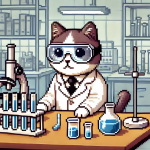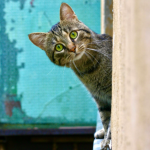
What Cat Owners Need to Know about Chronic Kidney Disease
Chronic Kidney Disease (CKD) is one of the most common health challenges for older cats. Affecting about 30-40% of cats over ten years old, CKD can significantly impact your cat’s quality of life. This progressive condition requires careful attention and ongoing management, but with the right care, many cats can still live comfortably for years.
What is Feline CKD?
Chronic Kidney Disease occurs when your cat’s kidneys gradually lose their ability to filter waste from the blood. Over time, this leads to an accumulation of toxins in the body, which can cause various health issues like weight loss, increased thirst, and vomiting. The disease is often diagnosed in older cats, but it can affect younger cats as well.
The kidneys play a crucial role in maintaining overall health, filtering waste, balancing electrolytes, and producing important hormones. When the kidneys start to fail, it can lead to a wide range of symptoms and complications.
Recognizing the Signs
One of the most challenging aspects of CKD is that it progresses slowly, making early detection difficult. However, there are several signs that cat owners should be aware of:
- Increased thirst and urination: Your cat may start drinking more water and using the litter box more frequently.
- Weight loss and poor appetite: Cats with CKD often lose weight and may become less interested in food.
- Lethargy: If your normally active cat seems sluggish or sleeps more than usual, it could be a sign of CKD.
- Vomiting and bad breath: As toxins build up in the blood, cats may experience nausea, vomiting, or develop an unpleasant odor from their mouth.
If you notice any of these signs, it’s important to schedule a visit to your vet. Early detection can help manage the disease more effectively.
Diagnosis and Staging
Diagnosing CKD typically involves blood tests and urinalysis. One key indicator is an increase in creatinine, a waste product filtered by the kidneys. Vets also look for a low urine concentration, as CKD impairs the kidneys’ ability to concentrate urine. These tests help stage the disease, which is important for determining the appropriate treatment.
CKD is categorized into four stages based on the severity of kidney dysfunction. In the early stages, your cat may not show obvious symptoms, but as the disease progresses, they may become more noticeable. Regular check-ups and blood work are crucial for monitoring kidney function, especially in older cats.
Managing CKD: What You Can Do
While there is no cure for CKD, the goal of treatment is to manage symptoms and slow the progression of the disease. Here’s how you can help your cat live more comfortably:
1. Dietary Changes
One of the most important aspects of managing CKD is adjusting your cat’s diet. Prescription renal diets are specially formulated with lower levels of protein and phosphorus to reduce the strain on the kidneys. These diets also contain added nutrients like omega-3 fatty acids, which can help manage inflammation.
2. Hydration
Due to their increased urine output, cats with CKD are prone to dehydration. Ensuring they have access to fresh water at all times is essential. Some cats may benefit from water fountains or flavored water to encourage drinking. In more advanced cases, subcutaneous fluids (fluids administered under the skin) may be necessary to maintain hydration.
3. Medications
Depending on the stage of CKD, your vet may prescribe medications to manage symptoms like high blood pressure or anemia. Anti-nausea medications can help improve your cat’s appetite, while phosphorus binders may be used to control phosphorus levels when dietary changes aren’t enough.
4. Regular Monitoring
Once your cat has been diagnosed with CKD, regular veterinary visits are essential. Monitoring blood pressure, urine protein levels, and kidney function will help your vet adjust treatments as needed. Regular check-ups can also catch complications early, such as urinary tract infections or worsening kidney function.
Improving Your Cat’s Quality of Life
While managing CKD can feel overwhelming at first, many cats with the disease continue to enjoy a good quality of life with proper care. It’s important to work closely with your vet to develop a personalized care plan that suits your cat’s needs. Small changes, like transitioning to a wet food diet or providing extra water sources, can make a big difference in how your cat feels.
Engaging your cat in gentle play, providing comfortable resting spots, and maintaining their routine can also help reduce stress, which is important for their overall well-being.
Join the Conversation
Have you ever cared for a cat with CKD? What challenges did you face, and how did you overcome them? Share your experiences and tips with other cat owners in the comments or on social media. We’d love to hear your thoughts!




